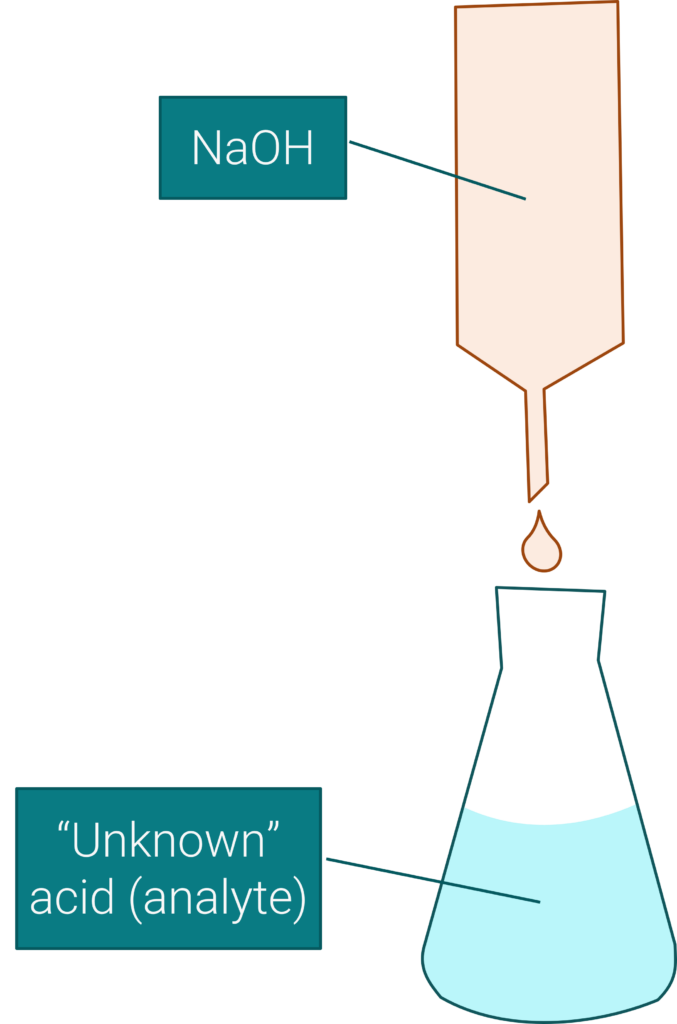Titrations are an application of reaction stoichiometry. They are used to quantitatively (exactly) determine the concentration of compounds in a solution. While you can perform a titration with many kinds of stoichiometric reactions (ones that go to completion), acid-base reactions are very easy to use for a titration analysis – the neutralization reaction is very easy to perform and measure.
In a titration, we start with our unknown species (the analyte) in a flask, and a solution with a very well known concentration in a buret (the titrant). In the figure below, we are using NaOH as our titrant, and an unknown acid is our analyte.

A titration is basically a slow, controlled version of a chemical reaction, where we add one of our reactants slowly, so that we can see the exact point when the perfect amount of our titrant has been added to exactly react with the amount of analyte in the flask – this is the equivalence point of the reaction. (an equivalent amount of titrant to match the analyte has been added).
In order to detect the equivalence point of a titration, we may use a colour indicator or (for acid-base reactions) a pH probe to monitor the reaction. The signal either of these gives us to indicate that the reaction is complete marks the endpoint – which ideally is the same as the equivalence point.
The key in performing a titration is that – since this is all stoichiometry – once we know the amount of titrant we needed to add to get to the endpoint, we can figure out how much analyte there must have been in the flask. We will use concentration and volume to find the amount of titrant we added, and stoichiometry (and the idea of limiting reagents) to calculate the amount of analyte.